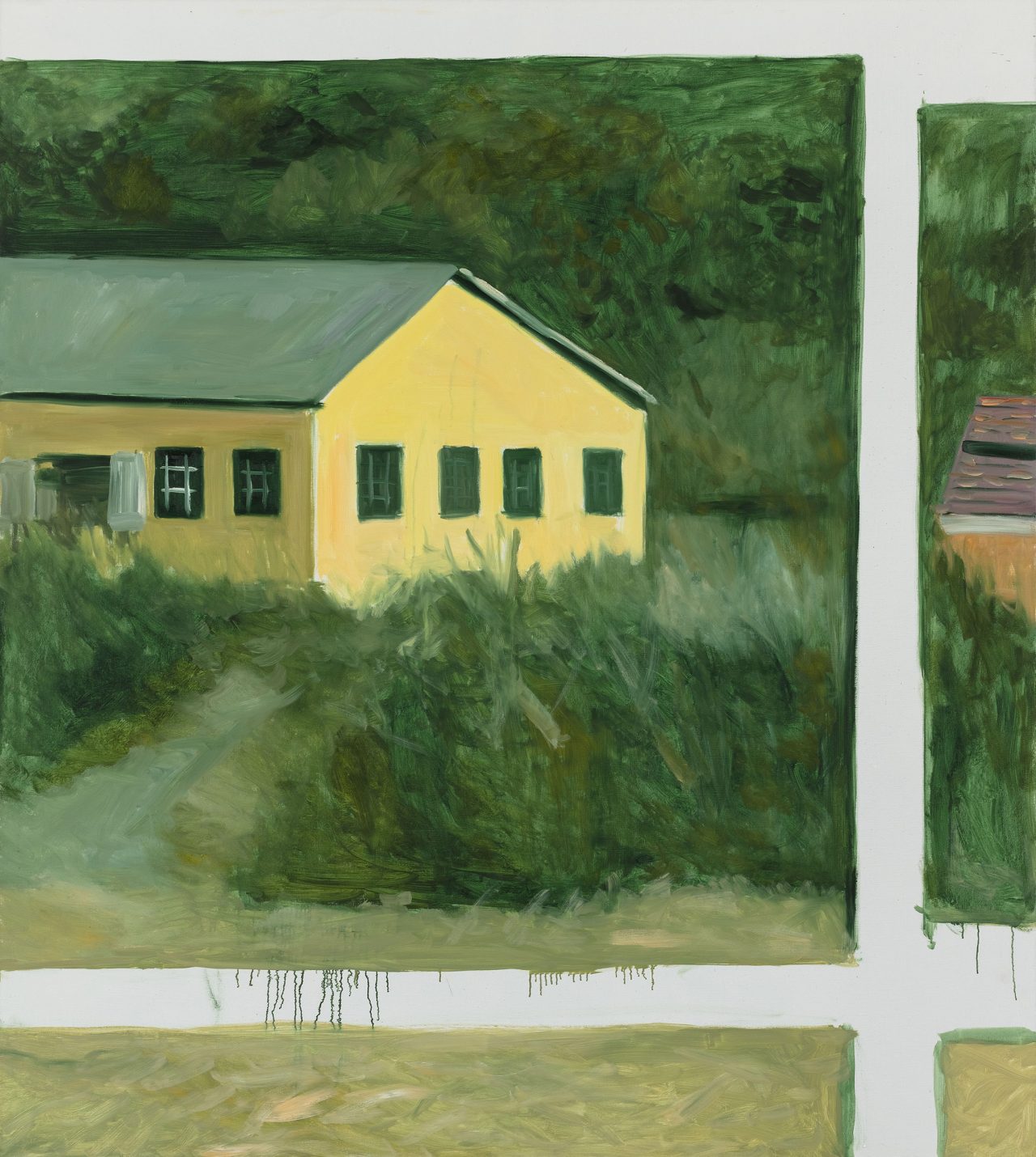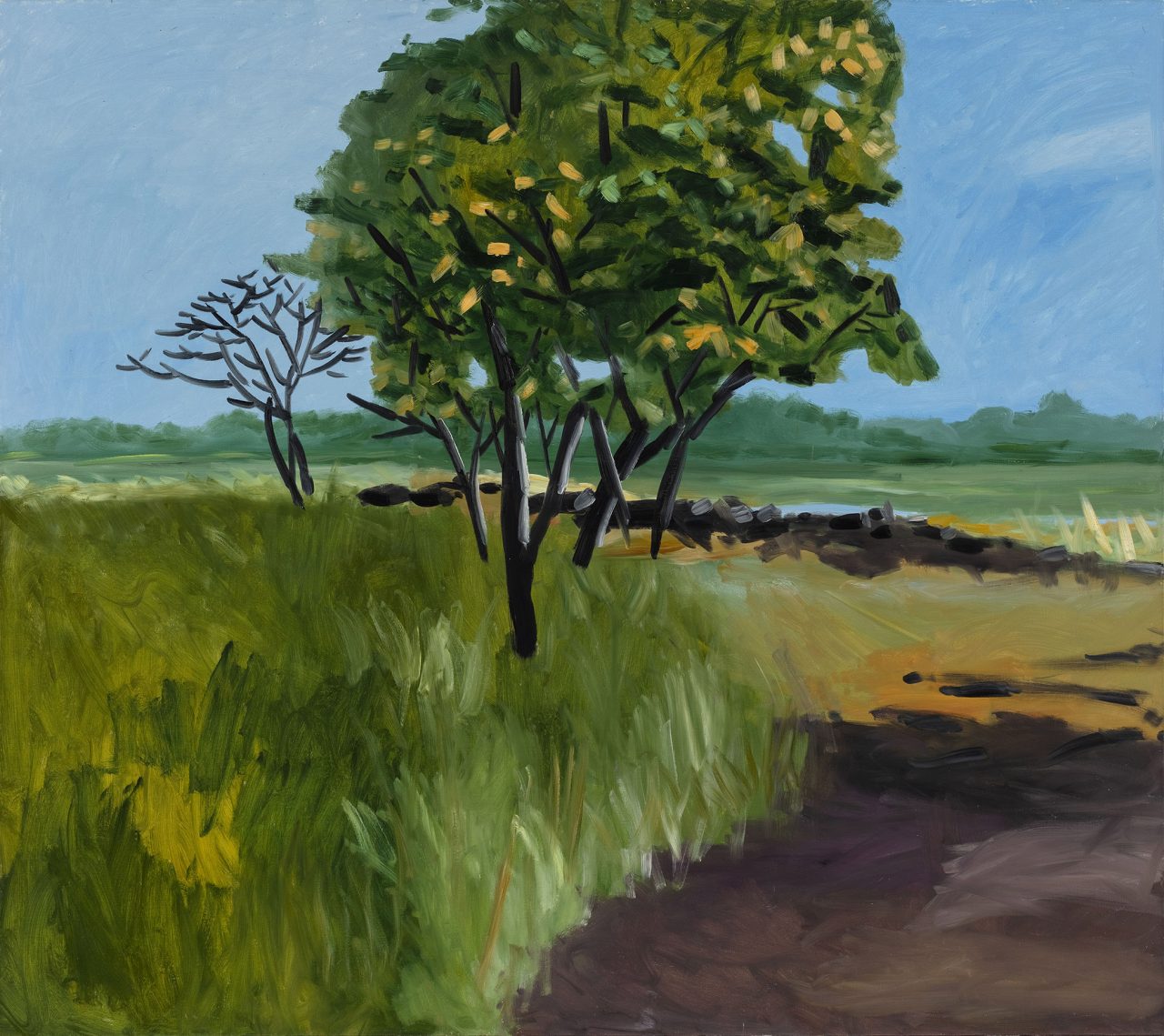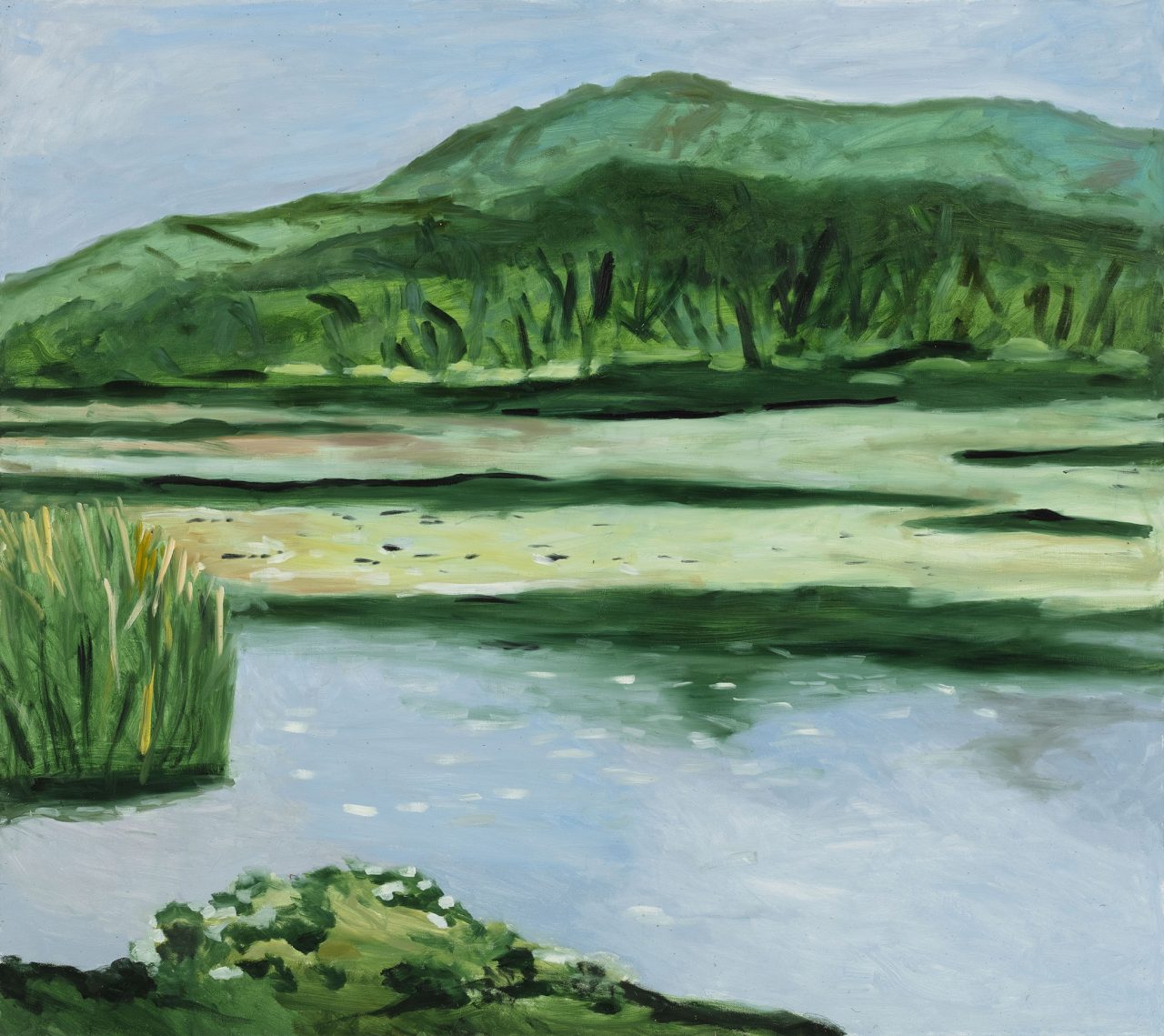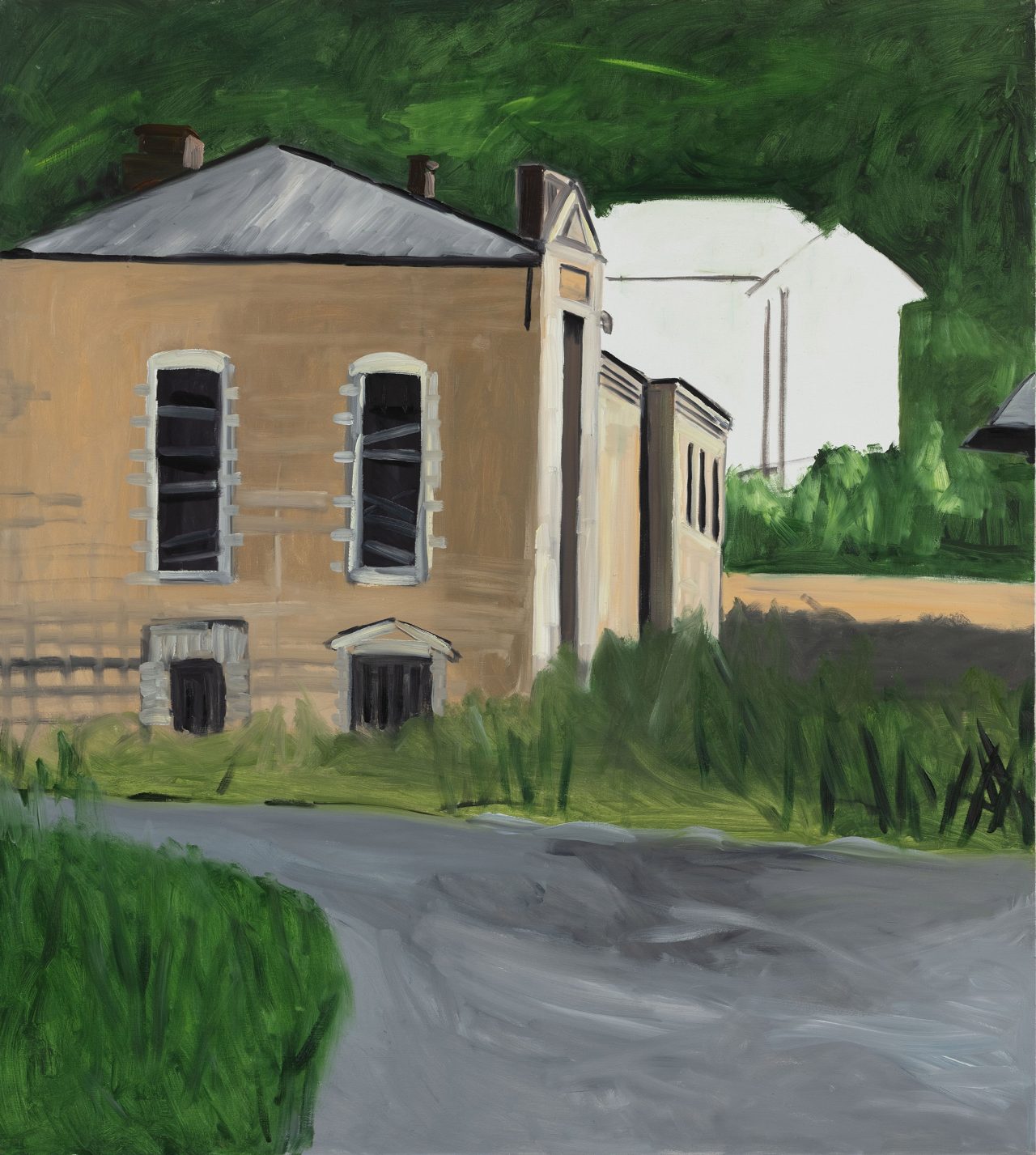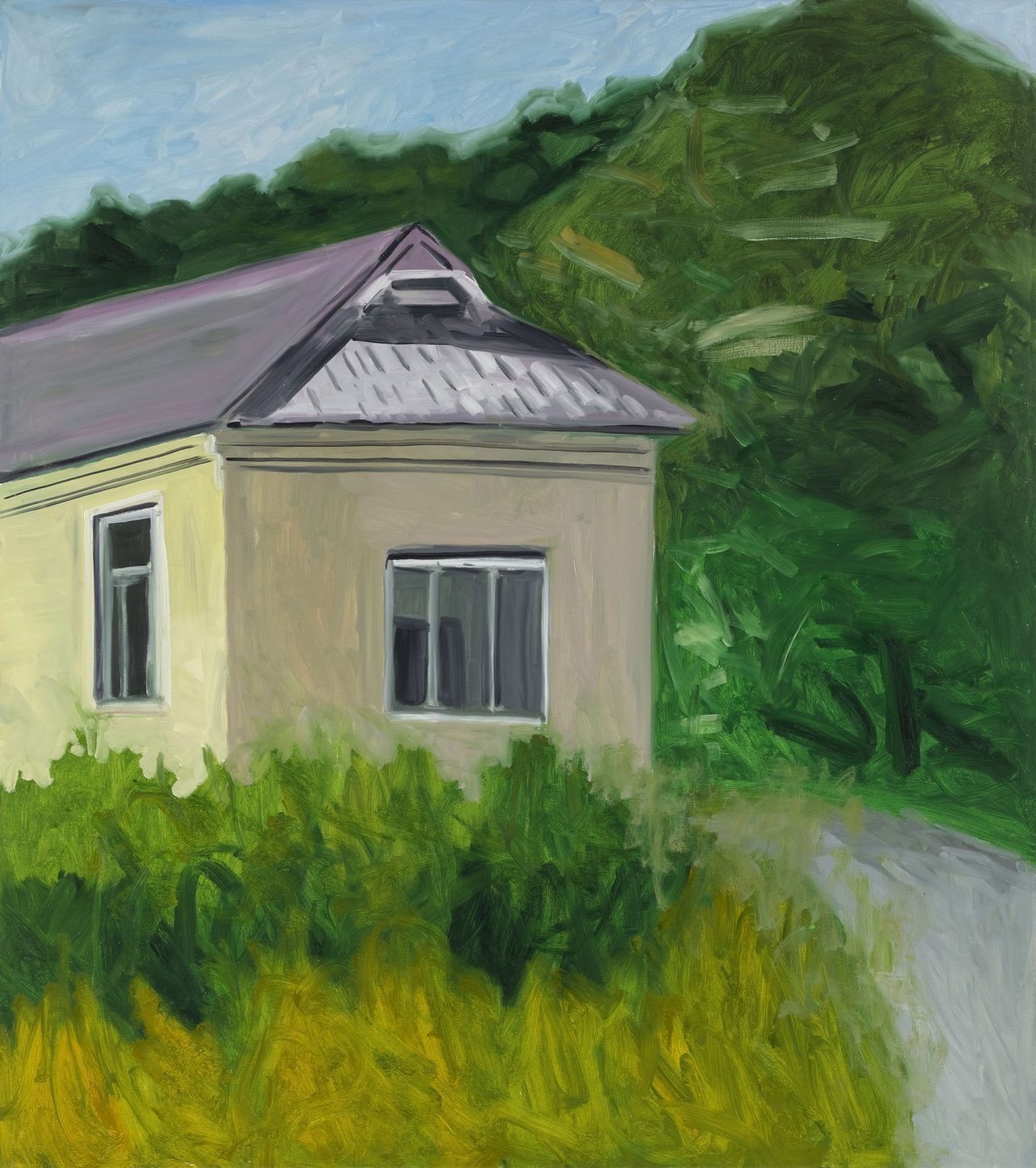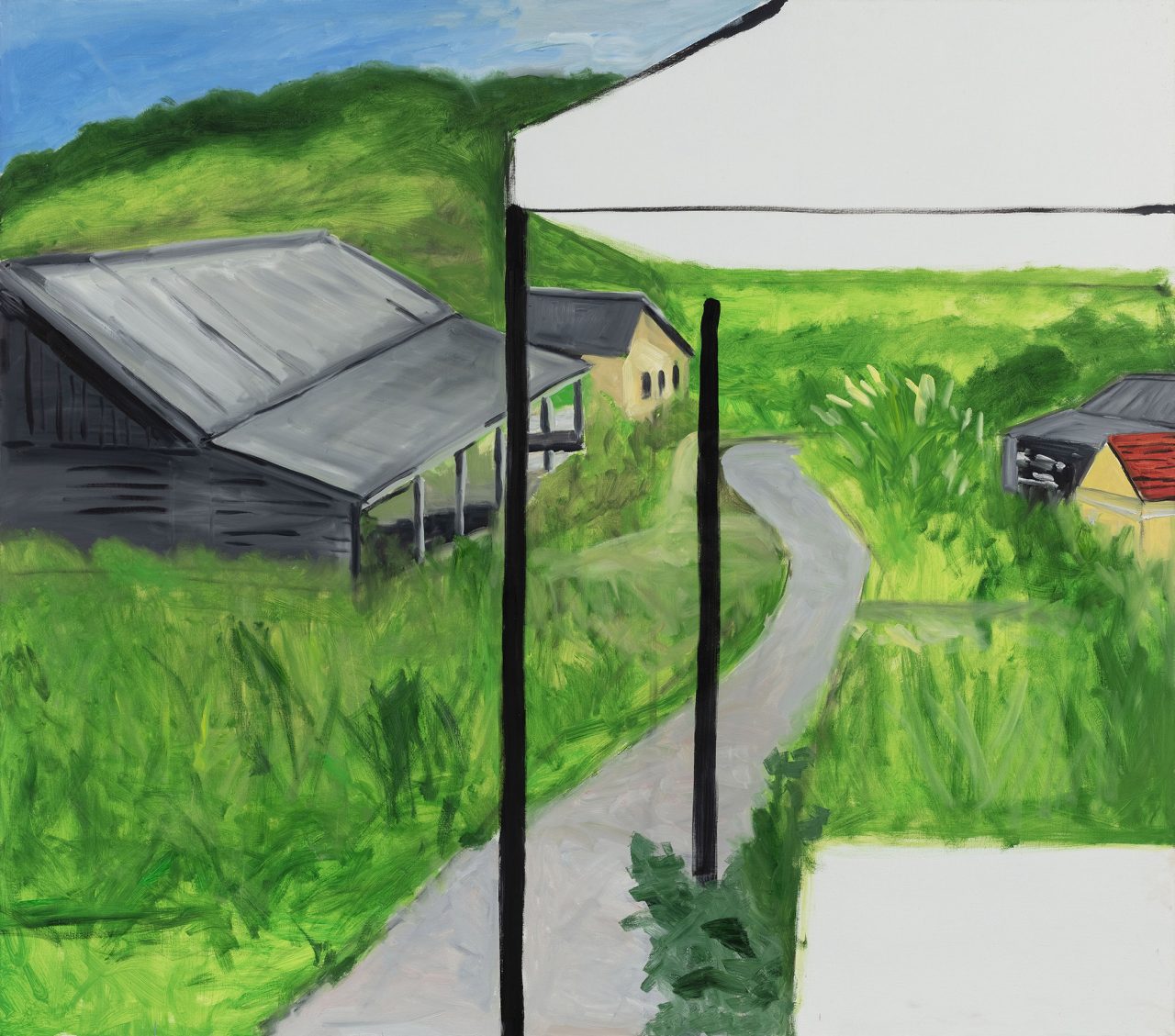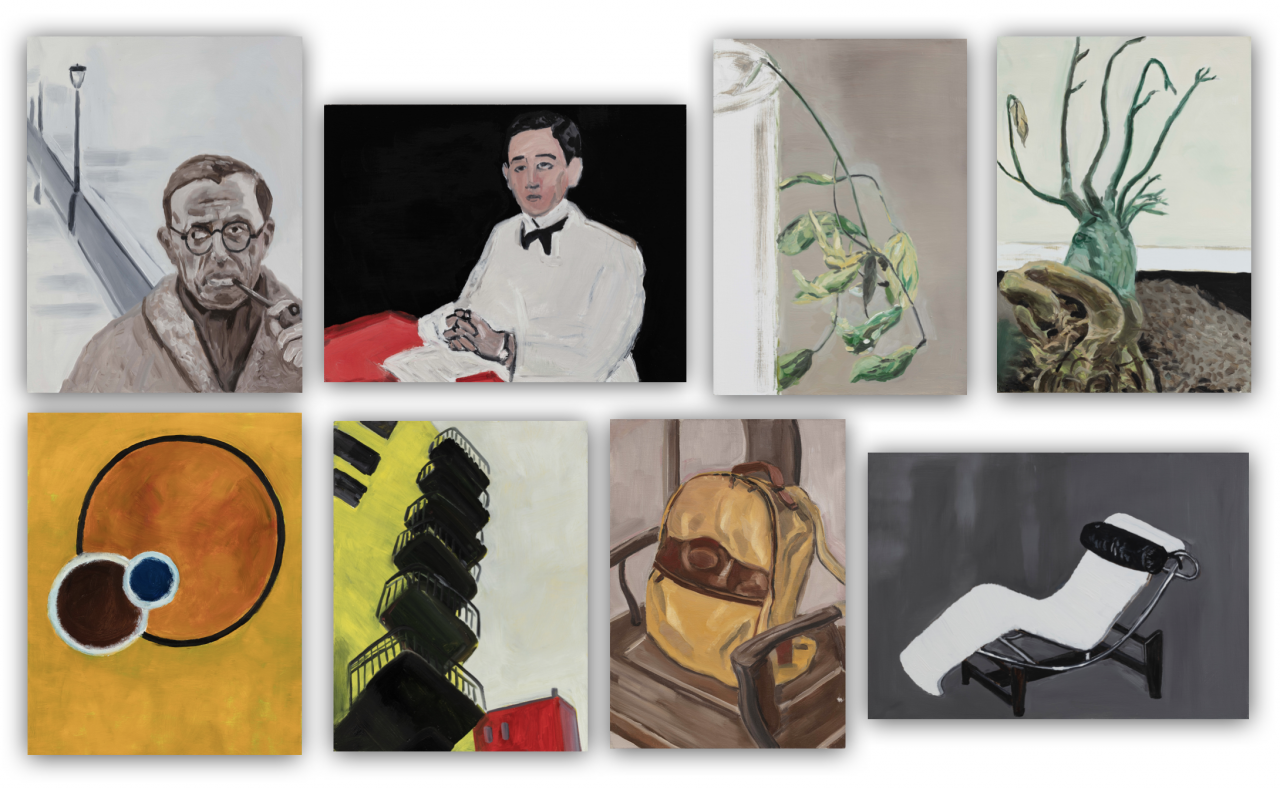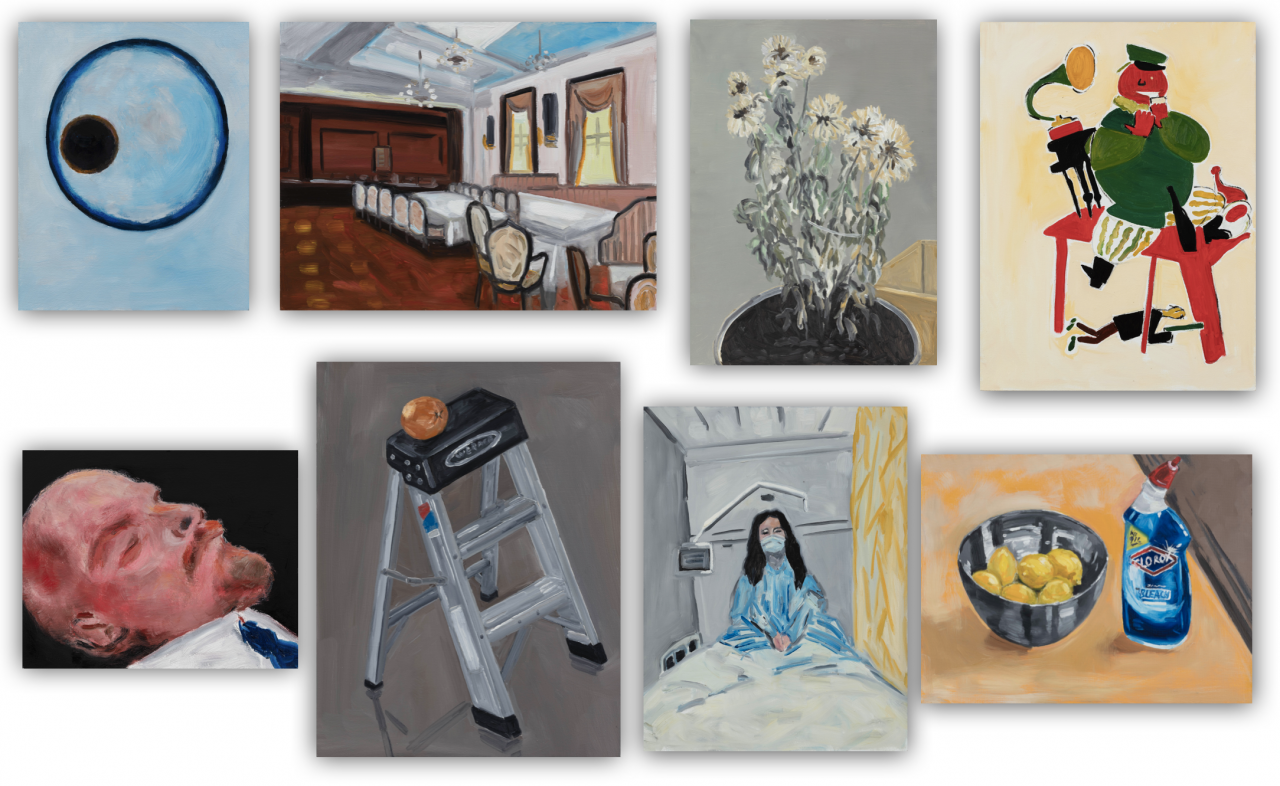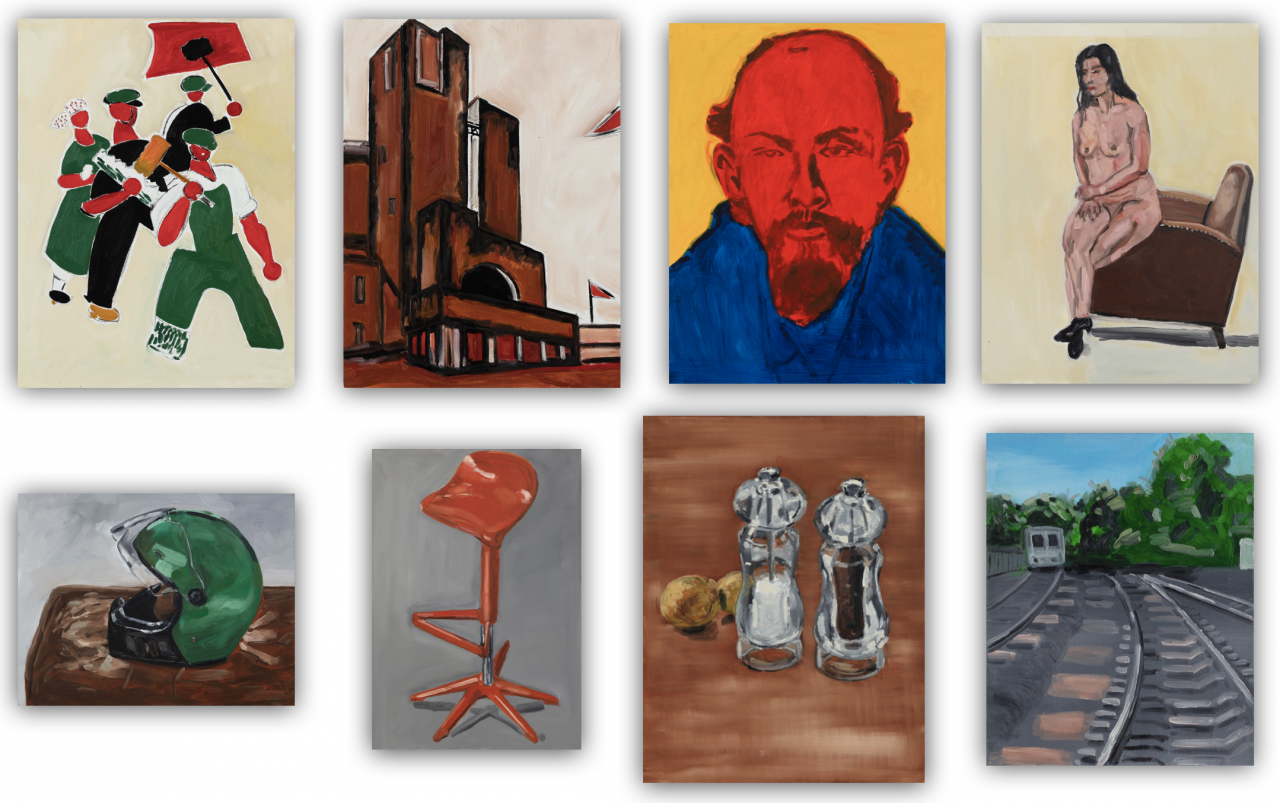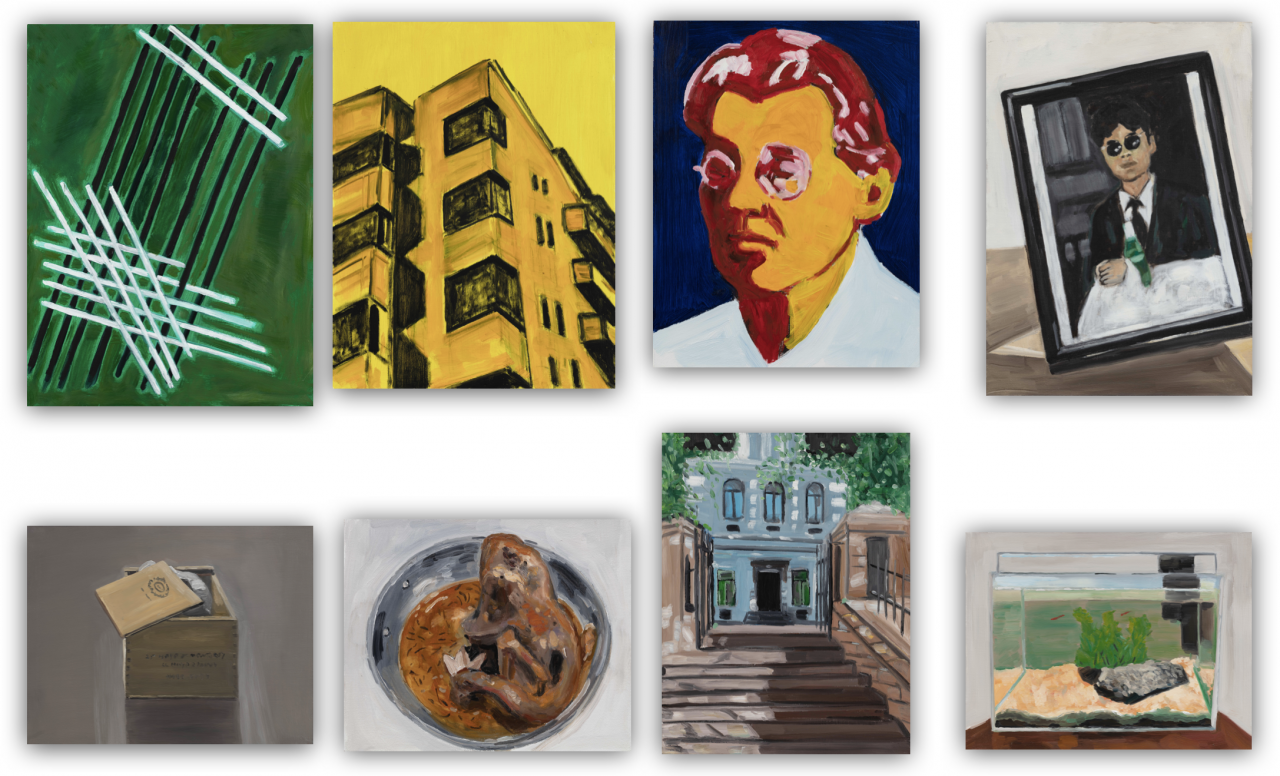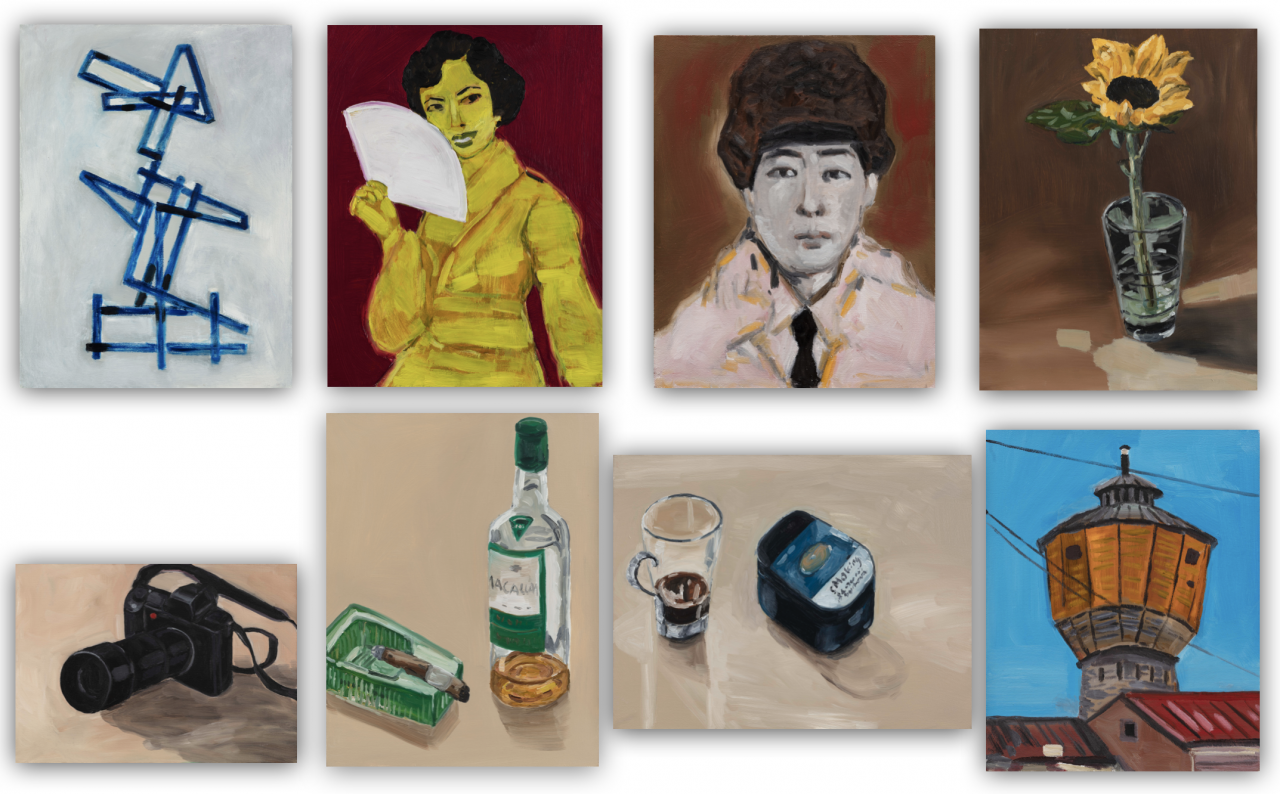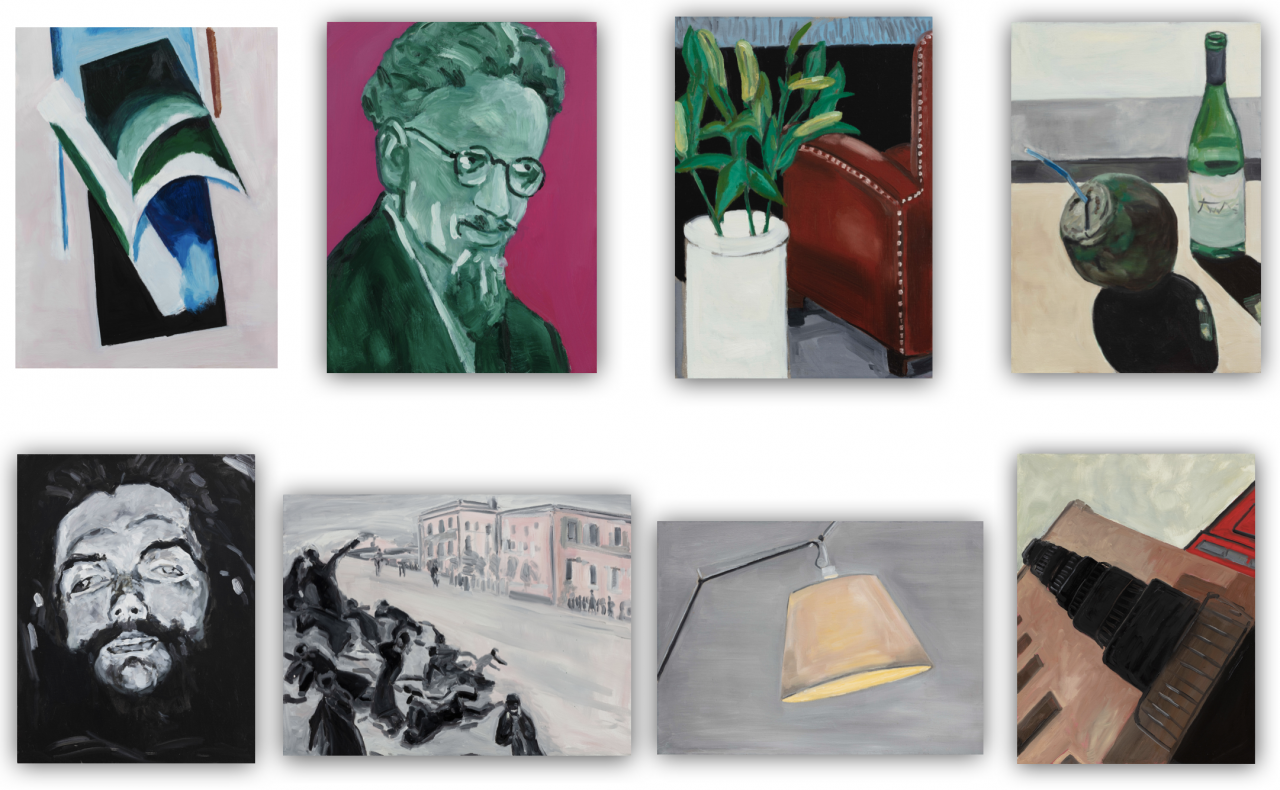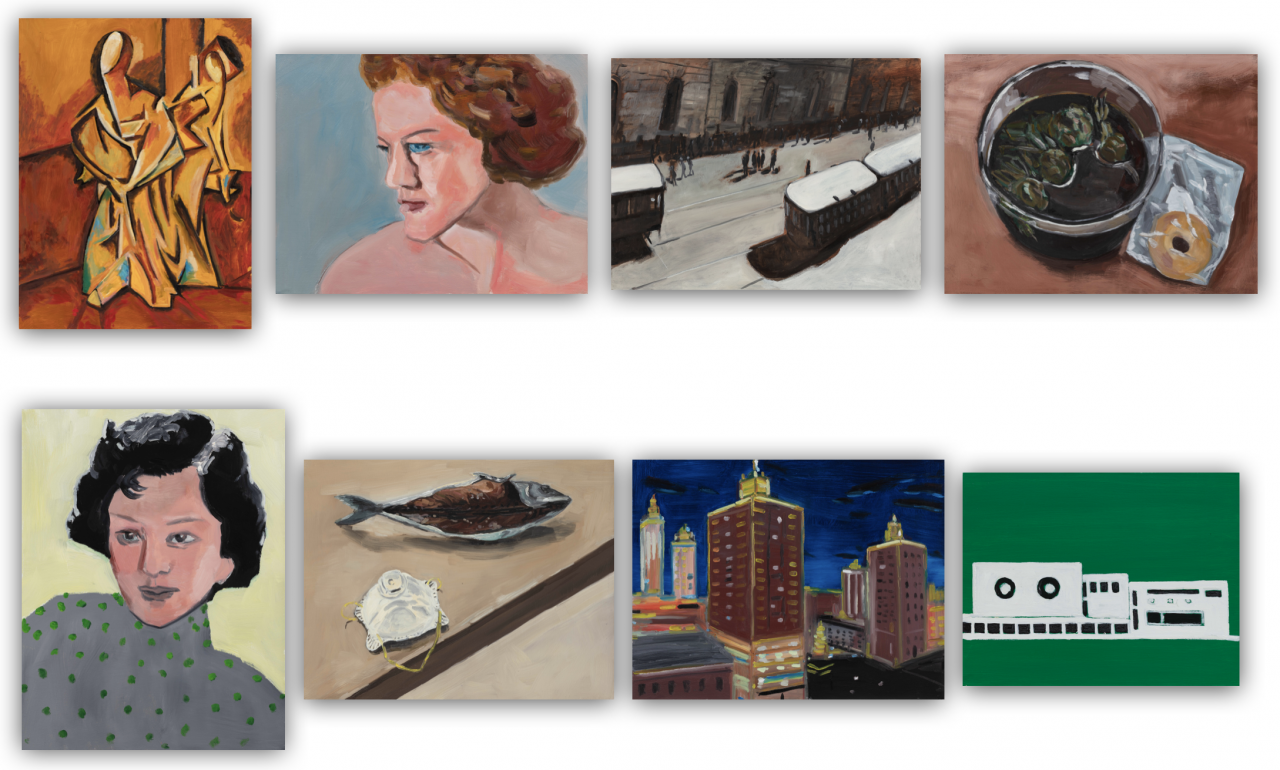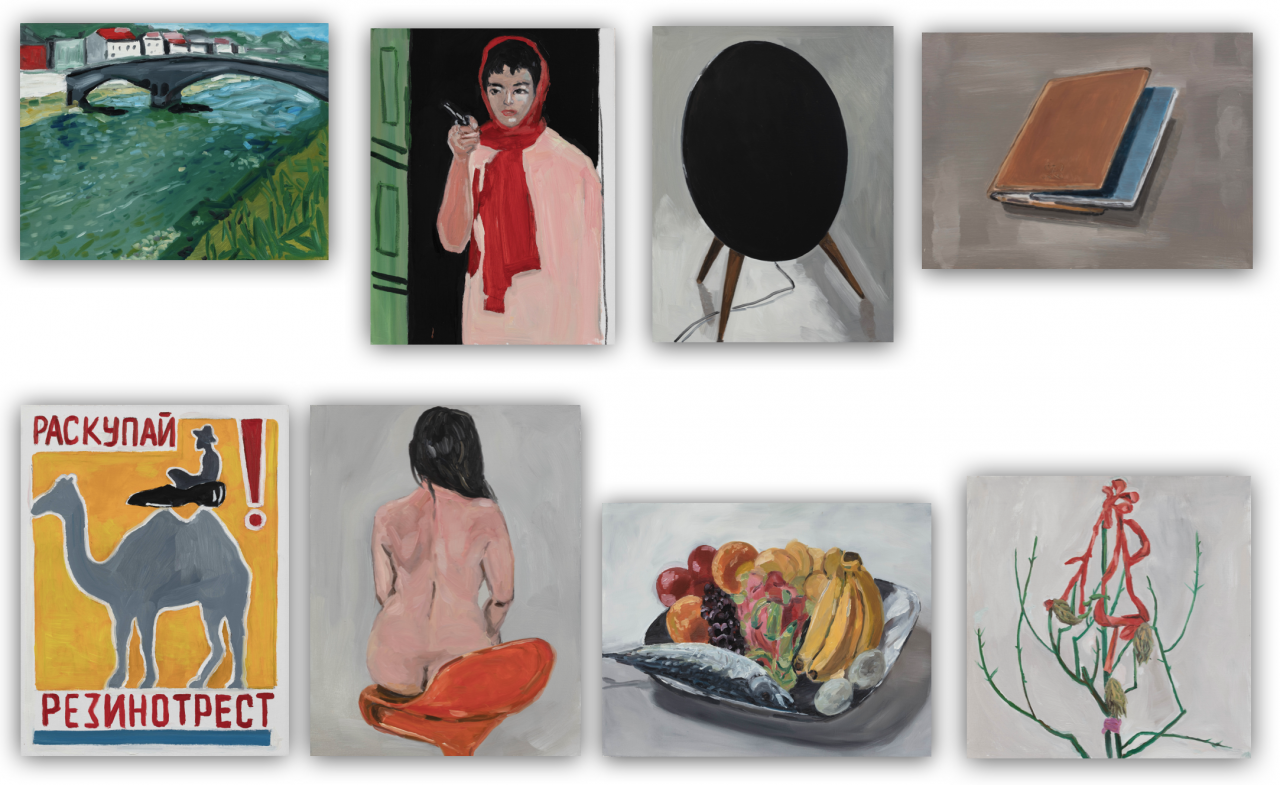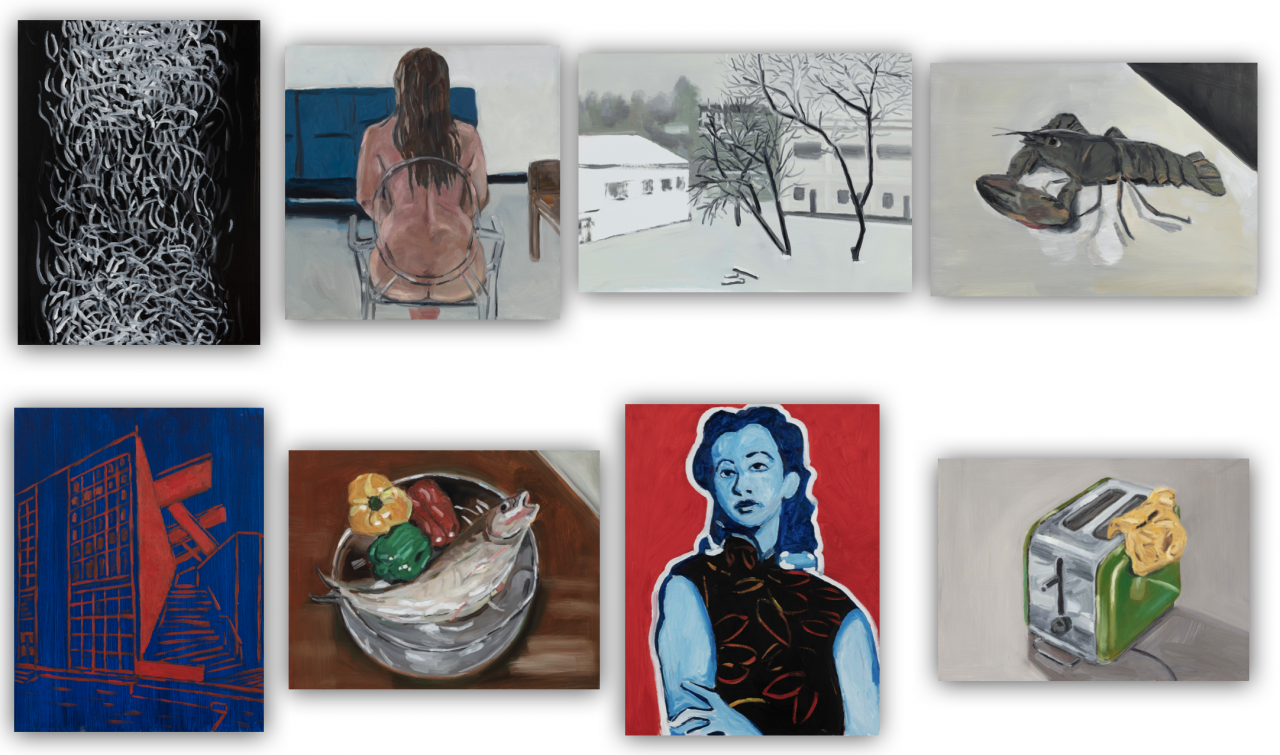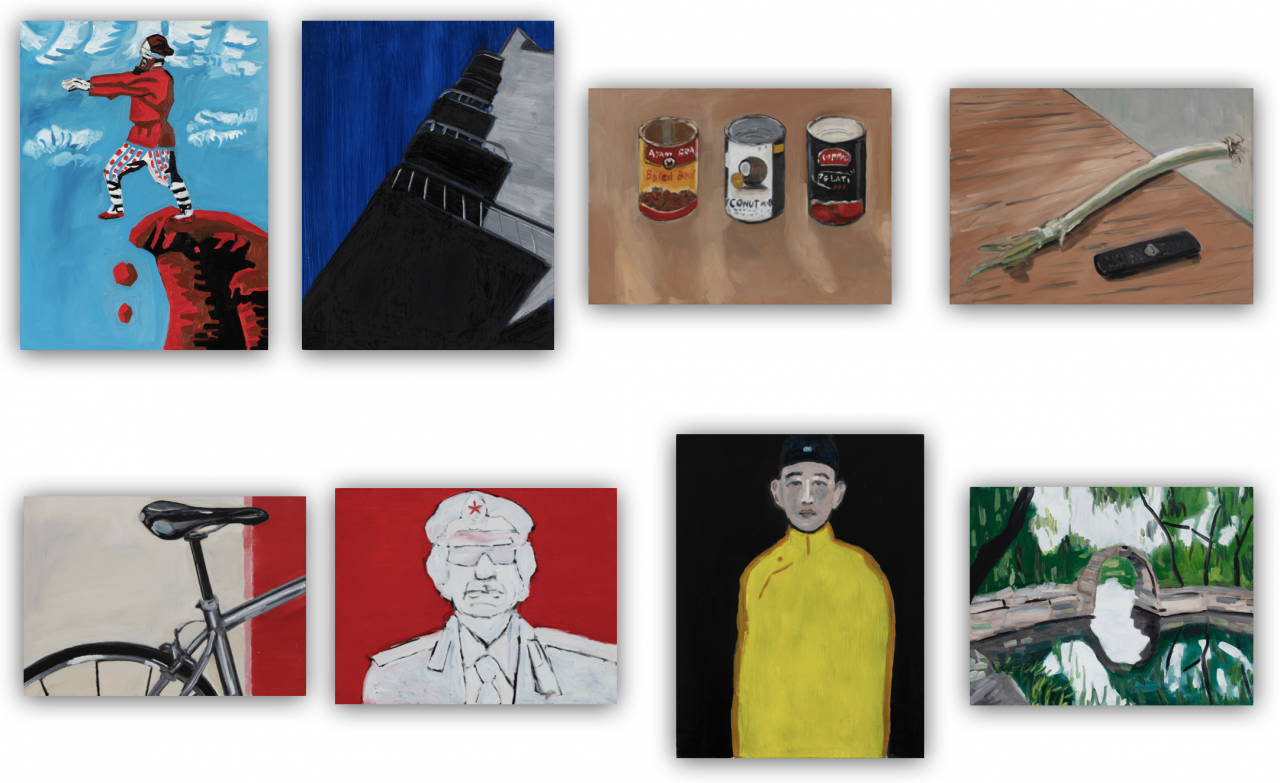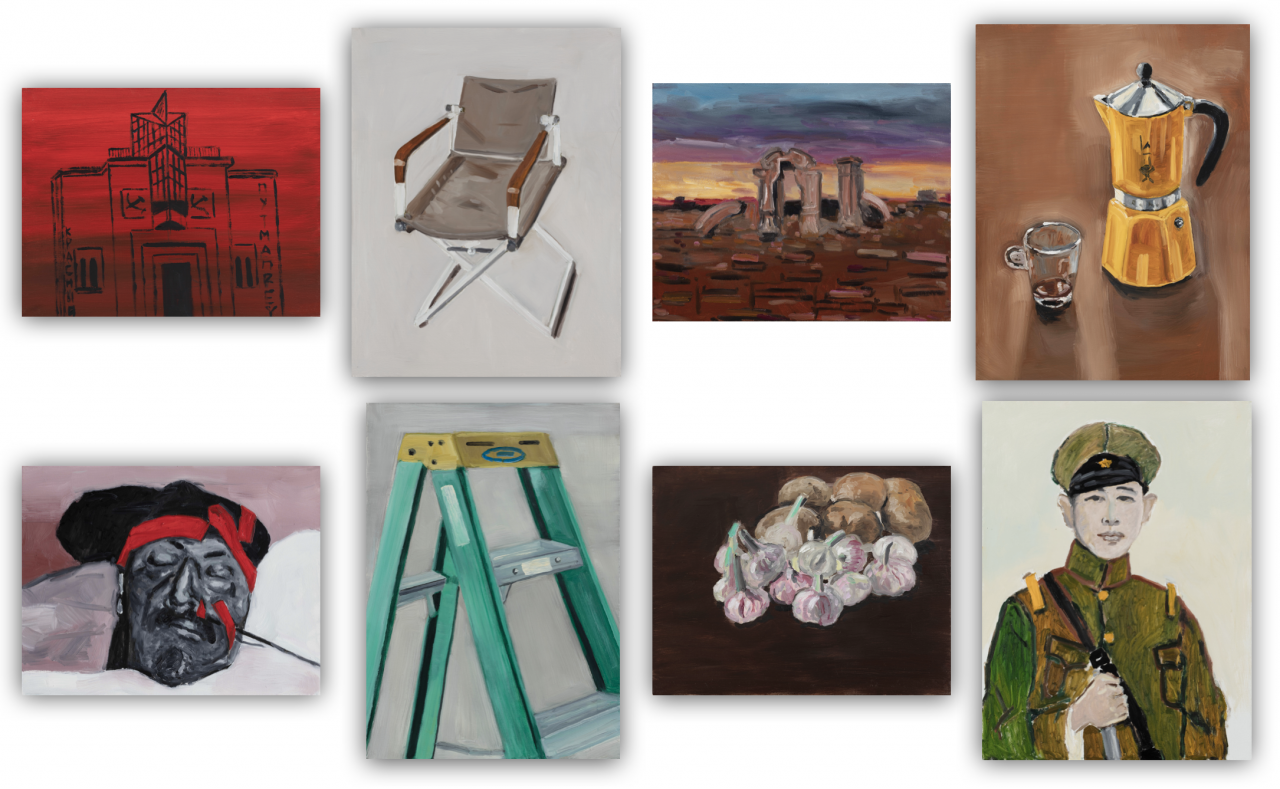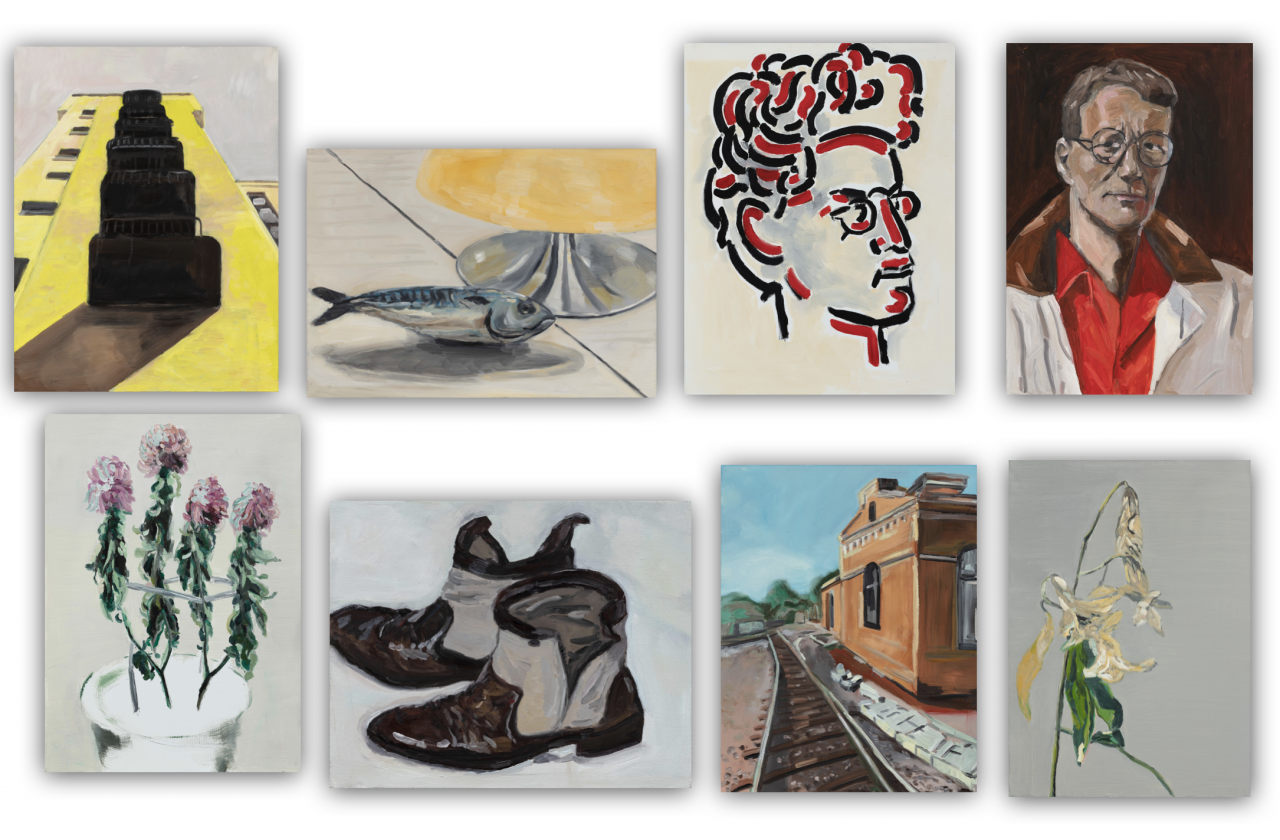Chinese Eastern Railway:Zhao Gang
"Chinese Eastern Railway: Zhao Gang" is a large-scale painting project created by the artist from July 2019 when he went to the northeast of China to do local research and later was completed in his Beijing studio in September 2020. Zhao Gang set foot in Manchuria for the first time ten years ago, and he developed a strong interest in the history and humanities of the Northeast region since then; five years ago, he began to travel over there constantly to investigate the Chinese Eastern Railway; in 2019, he and the artist Zhang Hui jointly launched the "Chinese Eastern Railway" art project. This exhibition includes 6 life paintings painted by the artist in Hengdaohezi, Hailin, Heilongjiang in the early period and 96 “The North-East" series that have been continuously derived in the later period, totaling 102 works.
The online viewing room will be launched from 24 October 18:00 to 31 October 18:00 (CST).
Video:"Chinese Eastern Railway:Zhao Gang"
How far do you have to go, to find the way home?
—Zhao Gang
Introduction
The "Chinese Eastern Railway" is a rail line that links up the great expanse of China's northeast and crucial moments in modern Chinese history. The actual railway was the product of the Sino-Russian Secret Treaty signed by the Qing Empire and Tsarist Russia in 1896. Construction began in August 1897, and the railway went into service in July 1903. The rail line drew a giant "T" on the map, centered on Harbin, stretching west to Manchuria, south to Lüshun, and east to the Suifen River.
The "Chinese Eastern Railway" project was first proposed by artist Zhang Hui in 2018, and launched by Zhang Hui and Zhao Gang in 2019. In this project, the two artists look back on their hometowns—Zhang Hui was born in Qiqihar and raised in Harbin, while Zhao Gang is a global nomad with Manchurian roots who currently lives in Beijing—as well as the shifting landscape of modern Chinese society, politics, ideology, and aesthetic expression through painting.

The map of Chinese Eastern Railway
Hengdaohezi
Hengdaohezi Town is a century-old town with a long history and deep Russian cultural context. It has been developed due to the construction of the Dongqing Railroad (Chinese Eastern Railway). After the opening of the Chinese Eastern Railway in 1903, starting from the operation of the Chinese Eastern Railway by Tsarist Russia to the Japanese and Puppet regime, the town has always been the seat of important military and political institutions. Some foreigners who came to China built villas and apartments here, opened factories and businesses. At that time, there were many merchants and high-rise buildings. Therefore, it was called "Garden Town. Many historical monuments with precious historical values remained until today. There are still 256 Russian-style buildings built between 1901 and 1905 in the town, and the only existing wooden Orthodox church in China, the Chinese Eastern Railway machine garage and other buildings have been completely preserved to today. (The text comes from the Internet)
The first group of artworks from the project, six large life paintings, arose from the artist's impulse to paint the scenery at Hengdaohezi in Heilongjiang Province, and document his return to the most basic state of artistic training.
The North-East Series
The sketches in Hengdaohezi begin the exhibition and flow into a river of 96 small artworks the artist created in his Beijing studio since the break out of the pandemic. Time and space intersect, the individual identity undergoes multiple shifts, life experience and the torrents of history weave together, nostalgia and melancholy flow. The 96 paintings are split into four categories, depicting objects in the artist's life, figures famous and not so famous, important images in art history, and various landscapes and plants, weaving critical moments and objects from modern history, art history, and the spread of ideas from West to East into the artist's individual narrative.
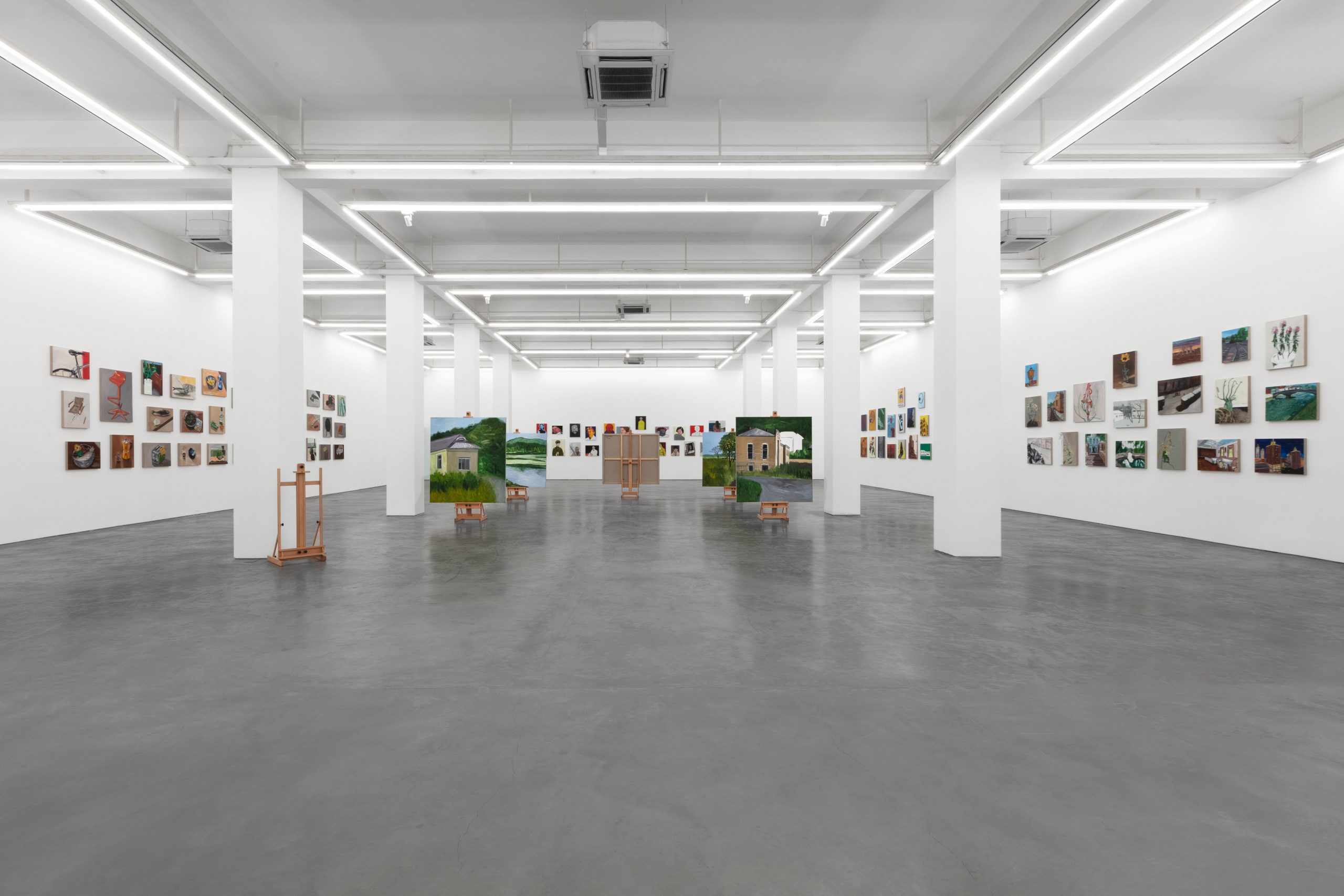
Exhibition photo
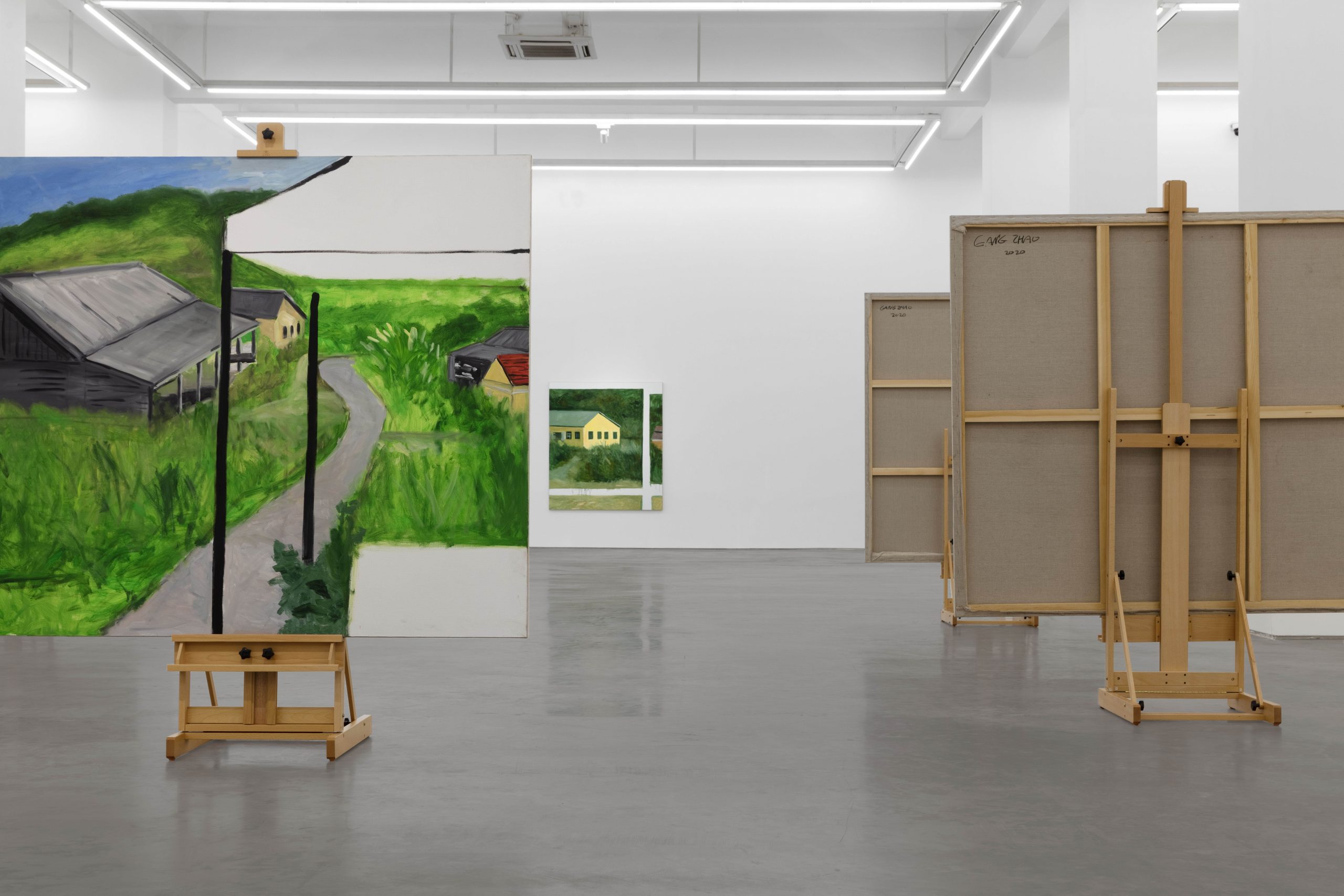
Exhibition photo
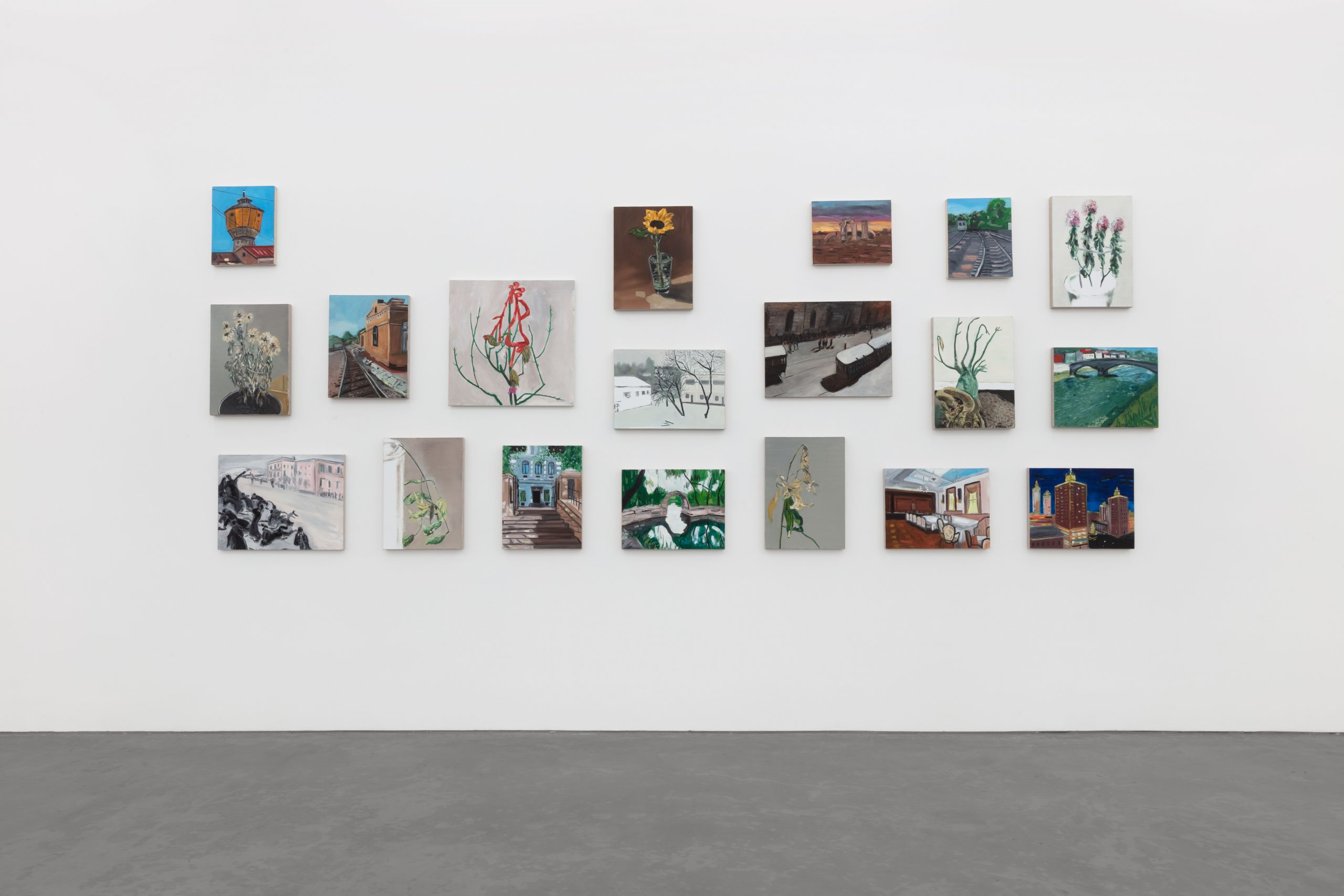
Exhibition photo
Zhao Gang (b. 1961, Beijing) currently lives and works in New York and Beijing. He made his artistic debut as a member of the Stars Group, one of the first avant-garde artist groups to open the era of contemporary art in China, when he was just 18 years old. Shortly thereafter he pursued formal art education in Europe and then New York. Zhao Gang lived overseas for over two decades, developing a diverse body of work as his perspective became distinctively international. Since returning to Beijing in 2006, Zhao Gang has turned his ever-expanding focus toward the entanglement of his personal past with Chinese history and his unique position, at once a native and a newcomer, in China today.
His selected solo exhibitions include: "Zhao Gang 21st: Supports / ColorLumps as Anthropography of History" (Kuandu Museum of Fine Arts , Taipei, 2020), "History Painting" (Peréz Art Museum Miami, Miami, 2019), "Acquiring Identity" (Long March Space, Beijing, 2018), "The Road to Serfdom II" (Museo de ArteContemporáneo,Santiago, Chile, 2016), "Paramour's Garden" (Suzhou Museum, Suzhou, China, 2015), "The Road to Serfdom" (Ullens Center for Contemporary Art, Beijing, China, 2015), "Sick Man: Zhao Gang" (Today Art Museum, Beijing, China, 2011).
Chinese Eastern Railway:Zhao Gang
"Chinese Eastern Railway: Zhao Gang" is a large-scale painting project created by the artist from July 2019 when he went to the northeast of China to do local research and later was completed in his Beijing studio in September 2020. Zhao Gang set foot in Manchuria for the first time ten years ago, and he developed a strong interest in the history and humanities of the Northeast region since then; five years ago, he began to travel over there constantly to investigate the Chinese Eastern Railway; in 2019, he and the artist Zhang Hui jointly launched the "Chinese Eastern Railway" art project. This exhibition includes 6 life paintings painted by the artist in Hengdaohezi, Hailin, Heilongjiang in the early period and 96 “The Northeast" series that have been continuously derived in the later period, totaling 102 works.
The online viewing room will be launched from 24 October 18:00 to 31 October 18:00 (CST).
Video:"Chinese Eastern Railway:Zhao Gang"
How far do you have to go, to find the way home?
—Zhao Gang
Introduction
The "Chinese Eastern Railway" is a rail line that links up the great expanse of China's northeast and crucial moments in modern Chinese history. The actual railway was the product of the Sino-Russian Secret Treaty signed by the Qing Empire and Tsarist Russia in 1896. Construction began in August 1897, and the railway went into service in July 1903. The rail line drew a giant "T" on the map, centered on Harbin, stretching west to Manchuria, south to Lüshun, and east to the Suifen River.
The "Chinese Eastern Railway" project was first proposed by artist Zhang Hui in 2018, and launched by Zhang Hui and Zhao Gang in 2019. In this project, the two artists look back on their hometowns—Zhang Hui was born in Qiqihar and raised in Harbin, while Zhao Gang is a global nomad with Manchurian roots who currently lives in Beijing—as well as the shifting landscape of modern Chinese society, politics, ideology, and aesthetic expression through painting.

The map of Chinese Eastern Railway
Hengdaohezi
Hengdaohezi Town is a century-old town with a long history and deep Russian cultural context. It has been developed due to the construction of the Dongqing Railroad (Chinese Eastern Railway). After the opening of the Chinese Eastern Railway in 1903, starting from the operation of the Chinese Eastern Railway by Tsarist Russia to the Japanese and Puppet regime, the town has always been the seat of important military and political institutions. Some foreigners who came to China built villas and apartments here, opened factories and businesses. At that time, there were many merchants and high-rise buildings. Therefore, it was called "Garden Town. Many historical monuments with precious historical values remained until today. There are still 256 Russian-style buildings built between 1901 and 1905 in the town, and the only existing wooden Orthodox church in China, the Chinese Eastern Railway machine garage and other buildings have been completely preserved to today. (The text comes from the Internet)
The first group of artworks from the project, six large life paintings, arose from the artist's impulse to paint the scenery at Hengdaohezi in Heilongjiang Province, and document his return to the most basic state of artistic training.
The slightly decadent beige house and the vigorous emerald green landscape are not deliberately exotic under Zhao Gang's fusion of brushstrokes, but they establish a new perceptual scale, re-measure, re-discover, and re-locate the relationship between the artist and the land.
Start with feelings, and finally return to emotion and thinking.
—Zhao Gang
The North-East Series
The sketches in Hengdaohezi begin the exhibition and flow into a river of 96 small artworks the artist created in his Beijing studio since the break out of the pandemic. Time and space intersect, the individual identity undergoes multiple shifts, life experience and the torrents of history weave together, nostalgia and melancholy flow. The 96 paintings are split into four categories, depicting objects in the artist's life, figures famous and not so famous, important images in art history, and various landscapes and plants, weaving critical moments and objects from modern history, art history, and the spread of ideas from West to East into the artist's individual narrative.

Exhibition photo

Exhibition photo

Exhibition photo
Zhao Gang (b. 1961, Beijing) currently lives and works in New York and Beijing. He made his artistic debut as a member of the Stars Group, one of the first avant-garde artist groups to open the era of contemporary art in China, when he was just 18 years old. Shortly thereafter he pursued formal art education in Europe and then New York. Zhao Gang lived overseas for over two decades, developing a diverse body of work as his perspective became distinctively international. Since returning to Beijing in 2006, Zhao Gang has turned his ever-expanding focus toward the entanglement of his personal past with Chinese history and his unique position, at once a native and a newcomer, in China today.
His selected solo exhibitions include: "Zhao Gang 21st: Supports / ColorLumps as Anthropography of History" (Kuandu Museum of Fine Arts , Taipei, 2020), "History Painting" (Peréz Art Museum Miami, Miami, 2019), "Acquiring Identity" (Long March Space, Beijing, 2018), "The Road to Serfdom II" (Museo de ArteContemporáneo,Santiago, Chile, 2016), "Paramour's Garden" (Suzhou Museum, Suzhou, China, 2015), "The Road to Serfdom" (Ullens Center for Contemporary Art, Beijing, China, 2015), "Sick Man: Zhao Gang" (Today Art Museum, Beijing, China, 2011).

